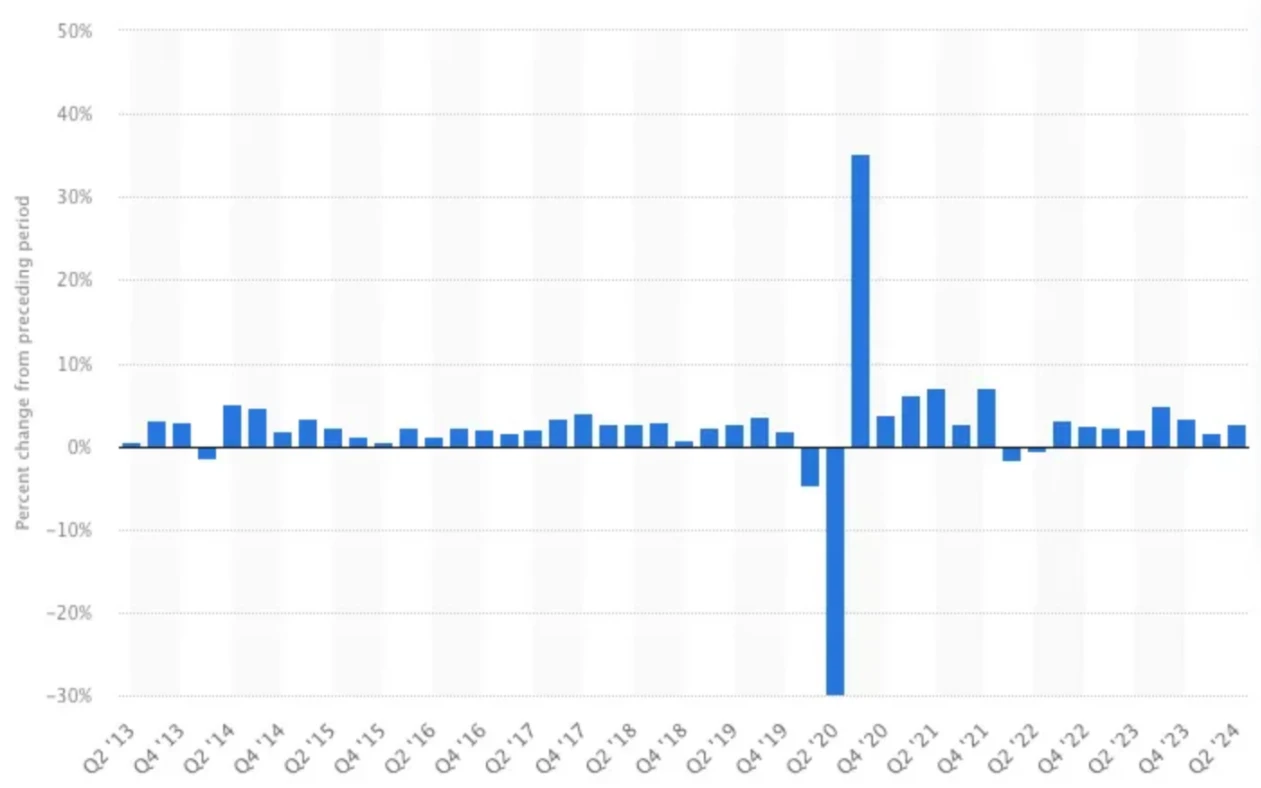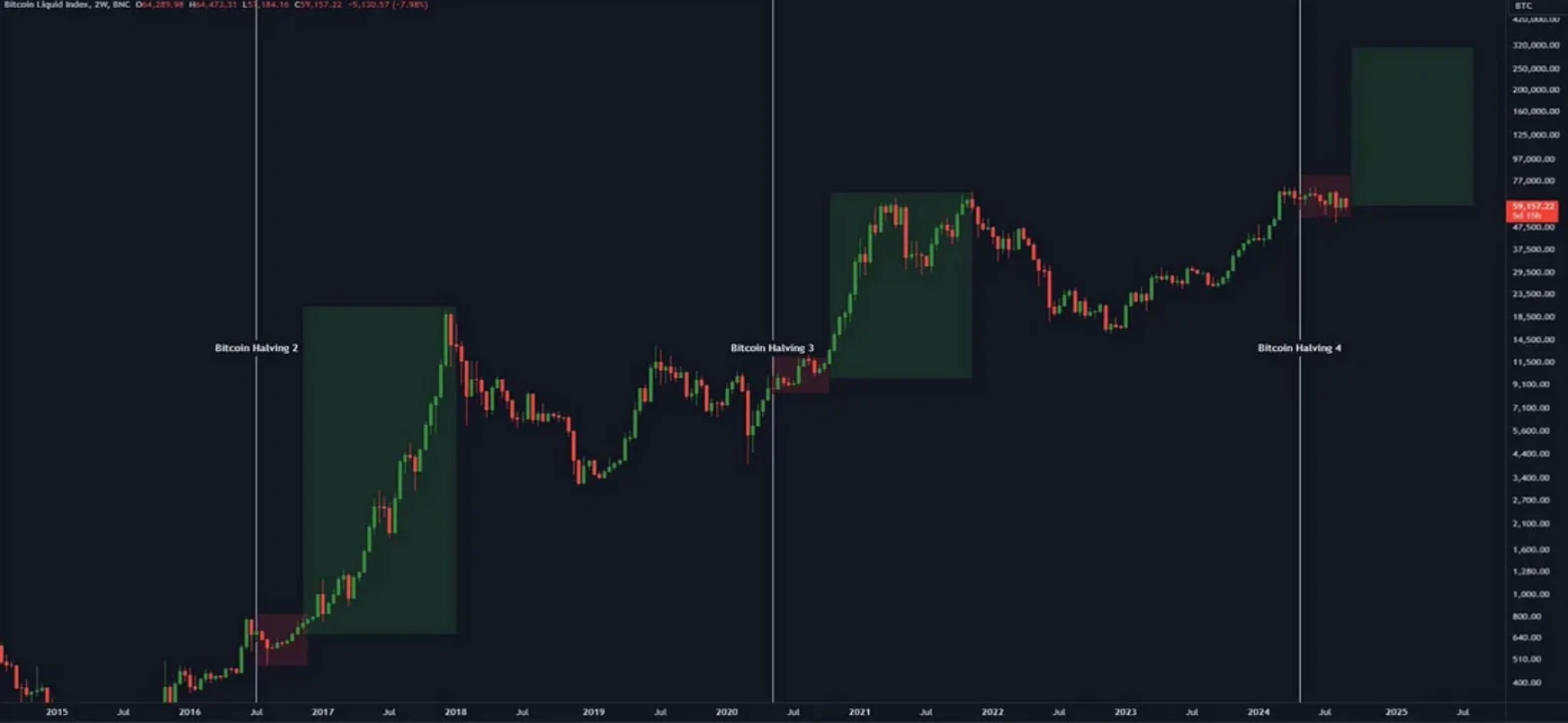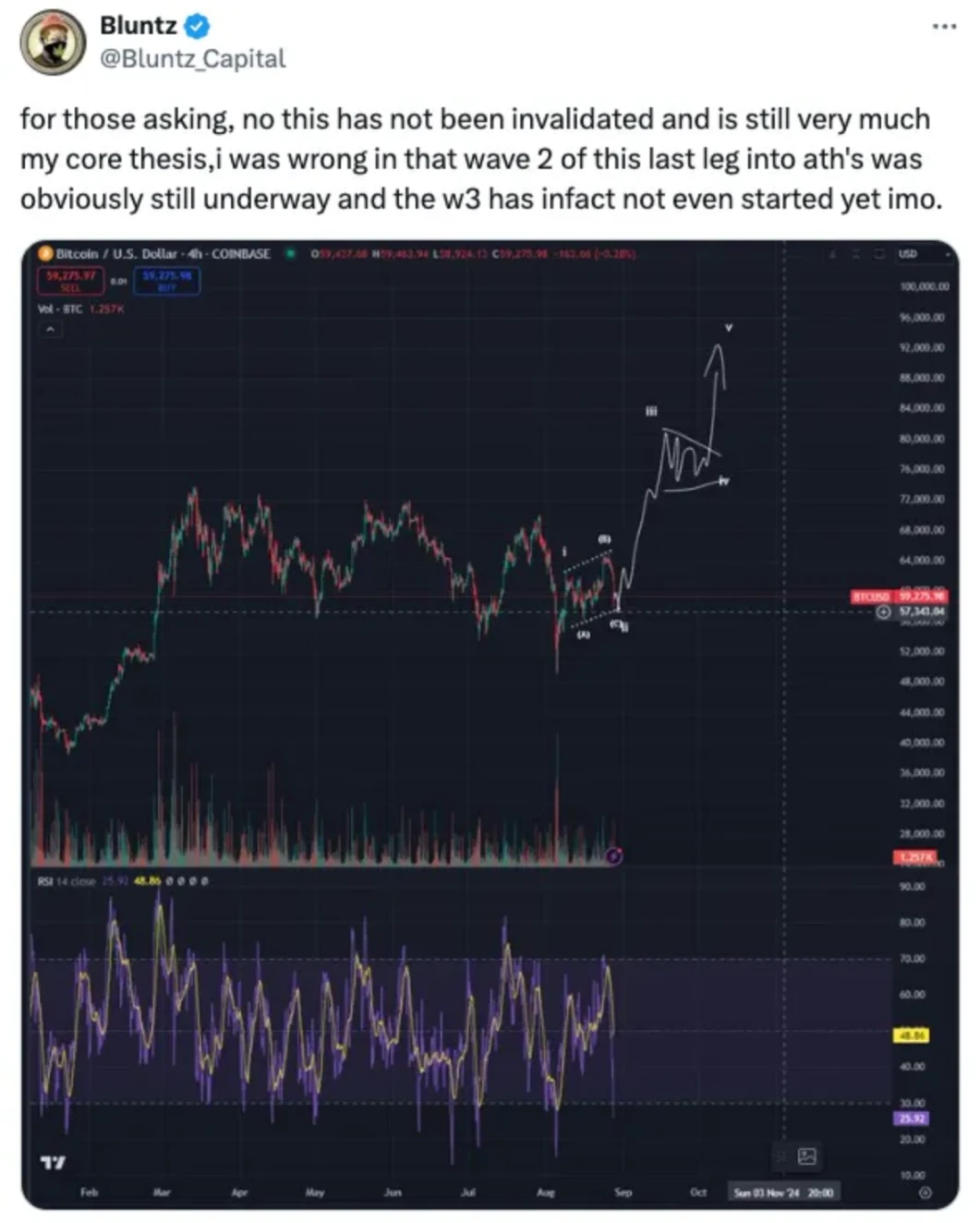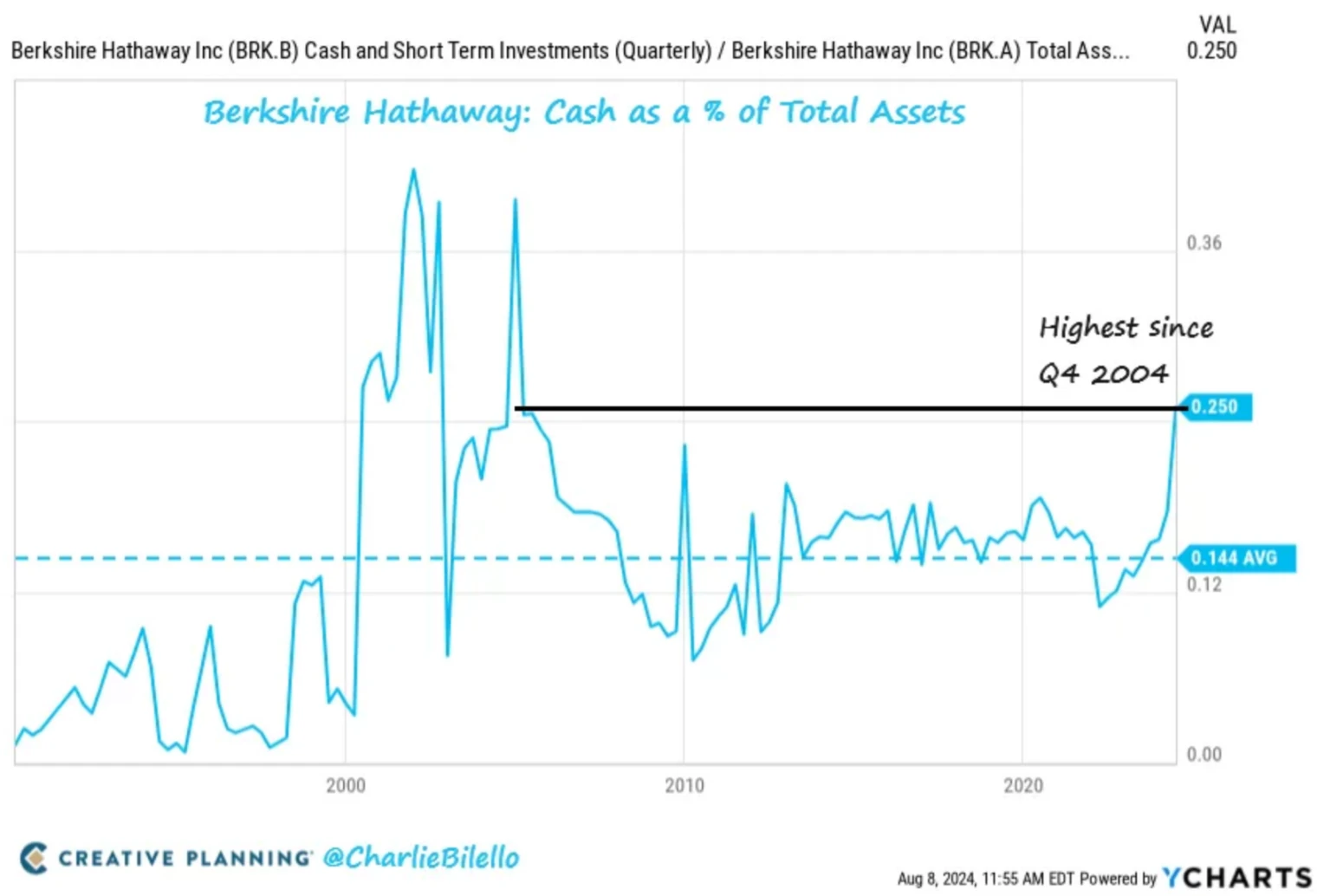Дебаты «быков» и «медведей» на рынке криптовалют: конец цикла или на пороге большого подъема?
Оригинальный автор: Thesis Fox
Оригинальный перевод: Vernacular Blockchain
Are we on the verge of another major rally in the crypto market? Or has the cycle already ended? This is a hotly debated topic at the moment, and there are very strong arguments on both sides. Considering that many people have invested their life savings in the crypto market, the stakes are extremely high.
This post will summarize the bull and bear arguments for the crypto market over the next 6-12 months and attempt to give some perspective on the strength of each argument. Let’s dive in.
1. Bullish view
1) The US macroeconomic situation is improving
Inflation has fallen below 3% (see Figure 1), the Fed is poised to start cutting rates, corporate earnings are strong, especially in the tech sector, and most economic indicators show a neutral to positive trend for the U.S. economy. It looks like the Fed’s goal of a “soft landing”—lowering inflation without pushing the economy into recession—is on track to be achieved. The rate cut factor is particularly attractive because it will further increase the appeal of riskier investments, and as interest rates fall, so will Treasury yields.
Top: US inflation rate from 2014 to 2024; Bottom: US quarterly GDP growth rate
2) Crypto markets have seen significant gains after the past two elections
I’ve seen a lot of people on Twitter sharing this idea and the associated chart, arguing that cryptocurrencies rallied sharply after the 2016 and 2020 elections, so they could do so again after the 2024 election.
Markets generally like certainty, and the US election is a source of uncertainty (both in 2016 and 2020). But I don’t think there are enough data points to make serious judgments based on this, especially given that the economic environment in 2024 will be very different from that in 2016 and 2020.
3) Bitcoin performs well after halving
On crypto Twitter, I’ve seen many versions of charts showing Bitcoin’s price surge after the 2016 and 2020 halvings. Like the argument above about election cycles, this seems overly simplistic and deterministic. I feel like these arguments reinforce the notion that cryptocurrencies are “cyclical,” with prices rising parabolically at regular intervals. But I worry that these views lack sufficient data support, and as crypto grows as an industry, such views will become harder to maintain. It may take more than memecoins and speculation for the current $2 trillion crypto market cap to rise parabolically.
Graphic from a post by @GuncelKriptoCom
4) Bitcoin remains stable
Despite negative sentiment and bearish views on the X platform that cryptocurrencies are nothing more than a speculative bubble, the price of Bitcoin has remained above $54,000 for several months. This continued stability at relatively high valuation levels, which has almost no precedent, has led some observers to believe that we are in a period of consolidation in preparation for the next major upward move. Cryptocurrencies are more mature than before, and the existence of ETFs, especially for Bitcoin and Ethereum, further reinforces this.
One account that I feel provides strong chart insights is Bluntz_Capital, who recently released their 2025 targets for Bitcoin, showing a consolidation period in September/October before a breakout, and expecting new highs by the end of the year. I have absolutely no idea if this will come to pass, but just sharing it as a possibility.
2. Short view
1) Negative macroeconomic situation
Many are convinced that the U.S. is headed for a recession and believe a soft landing is a myth. They point to rising unemployment data and downward revisions to the strength of the labor market in recent months. Others believe that once interest rate cuts begin, inflation could explode again, as it did in 1970.
I think both views are selectively citing data to support their positions. We havent had negative growth since Q1 and Q2 of 2022, so by definition we wont be in a recession until Q1 of 2025 at the earliest. Dont worry too much about a recession until we actually have a negative growth quarter.
The inflation issue is more difficult to predict. After the rate cut, inflation may reverse and rise again, and we can only wait and see. Although inflation should be a favorable narrative for cryptocurrencies, especially Bitcoin, as it is considered the ultimate hedge against the theoretically hyperinflationary dollar.
The final argument I see is that Berkshire Hathaway has clearly sold off its tech holdings massively over the past quarter and now holds the highest percentage of cash since 2004. It is indeed interesting to see this legendary value investor reducing risk, and of all the macro indicators mentioned above, this is the one that worries me the most about what is going to happen going forward.
Источник: @charliebilello в Твиттере
2) The Weak Position of Narrative
This is an ultimate medium-term view, but arguably one of the biggest problems with cryptocurrency is that it doesn’t do anything useful or solve any important problems. Its primary use case is speculation.
Bitcoin’s value is not as a currency that is actually used, but as a superior store of value to gold. It will be more valuable when governments and sovereign wealth funds rush to hold Bitcoin as a hedge against hyperinflation.
The Ethereum community has also heavily promoted a similar narrative of ETH as a “super-sounding currency” that has deflationary properties due to fee burning, but is in high demand due to its position at the center of Ethereum transaction fees and its rapidly expanding Layer 2 network (which uses ETH as a central medium of exchange). However, Ethereum is still slow and expensive compared to next-generation blockchains, and Layer 2 also brings interoperability challenges. And, on top of that, there is still no real killer crypto application used by millions (let alone hundreds of millions) of people around the world.
Many indicators show that Solana has become a strong competitor to Ethereum, including daily users, revenue/fee capture, profitable applications, NFT sales. Although there have been many encouraging developments in the past year, especially in the payment space (VISA integration, PayPal PYUSD adoption and Stripe integration) and decentralized physical infrastructure networks (Helium mobile growth, Hivemapper growth), most of the attention on the chain is still focused on gambling on meme coins (the most primitive speculation).
And, unlike last September when the entire crypto market was underperforming, current valuations are already high. Over the past 12 months, Solana is up 560% (and hitting a new market cap high), Bitcoin is up 122% since hitting a new high in March, and many coins are up more than 2x. These may not be the high multiples that crypto speculators were looking for, but this puts cryptocurrencies in a challenging position, either needing to inspire new adoption or face the selling pressure that always comes when speculative energy runs out.
3) Comparison in 2019
Well-known Bitcoin analyst Benjamin Cowen recently released a video arguing that the current market structure reminds him of 2019, which means that the crypto market may experience a period of steady decline after the Feds multiple rate cuts. This is not necessarily bearish for the long-term trend, but it is contrary to the view that we are in a local bottom and prices will rebound before the end of the year.
Источник : https://youtu.be/nMJouBMXODs
Im not sure which side has more compelling arguments, and I feel like Im wavering between the two on a daily basis. Its difficult… because I dont want to reduce risk before the next big rally. But I also dont want to be greedy and miss out on a 5-6x gain in a year, and then end up holding a speculative asset that could drop 80%+ in the next two years if we have another crypto winter.
If you’re struggling to figure out how to navigate this market, I wish you the best of luck and hope this post provides some helpful insights on your journey.
This article is sourced from the internet: Crypto market bulls and bears debate: End of cycle or on the verge of a big rise?
Related: Decoding the Banana Zone: 6 economic indicators reveal that prices may rise
Original author: CRYPTO, DISTILLED Original translation: TechFlow You may have heard of the banana zone, but do you know when it actually arrives? (Note: Banana Zone refers to a special period in the financial market during which asset prices may rise sharply) Here are 6 key metrics you can’t miss: 1. Small-cap stocks and the real economy Indicator 1 : Russell 2000 Index ($IWM) Insight : $IWM represents small-cap stocks and has recently started to break out. This index is an important indicator of the health of the real economy. As corporate earnings increase, more money usually flows into these assets. Source: @pakpakchicken 2. Rising risk appetite Indicator 2 : Russell 2000 ($IWM) and Nasdaq 100 ($QQQ) trading volume Insight : $IWM trading volume also reflects the market’s risk appetite.…















